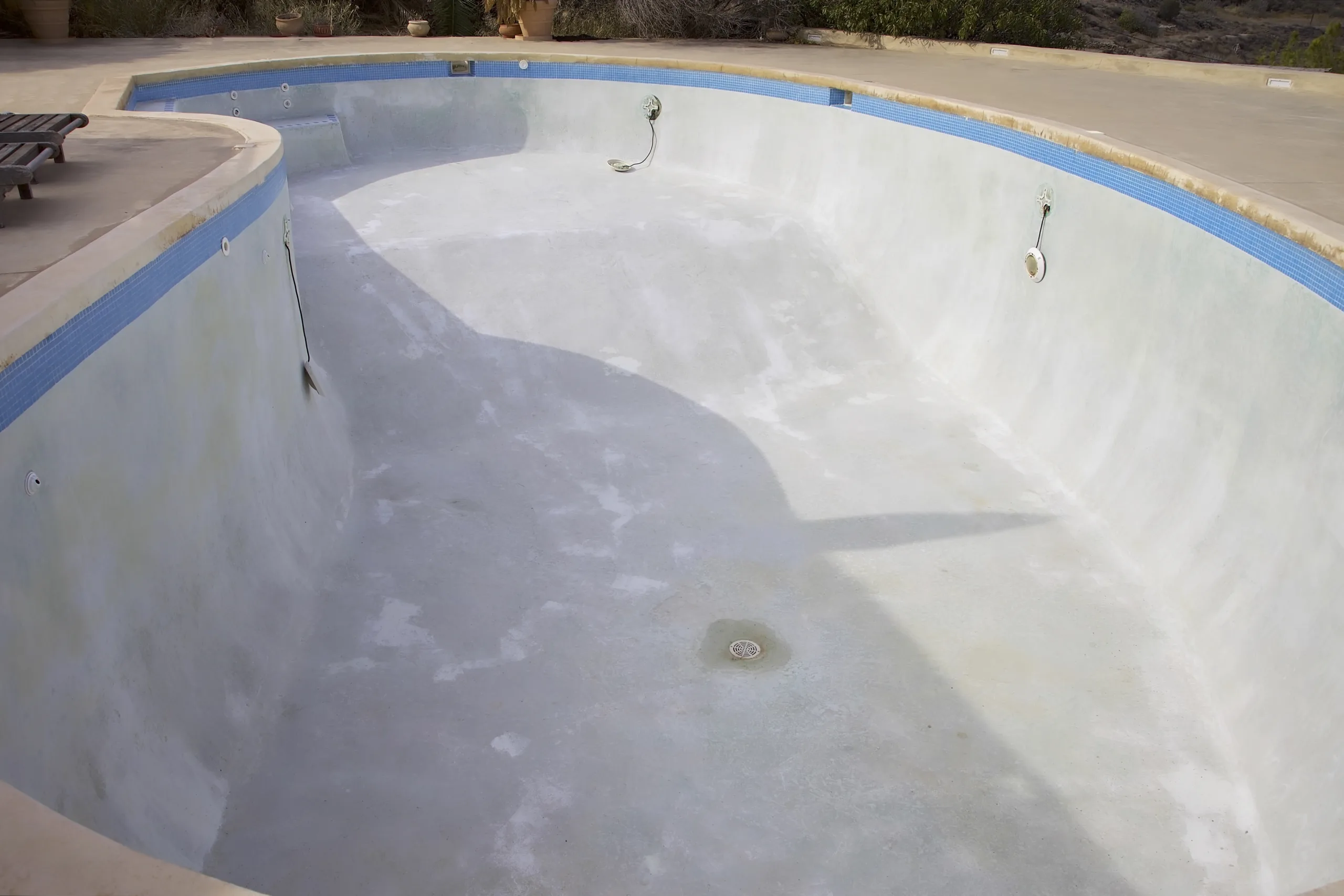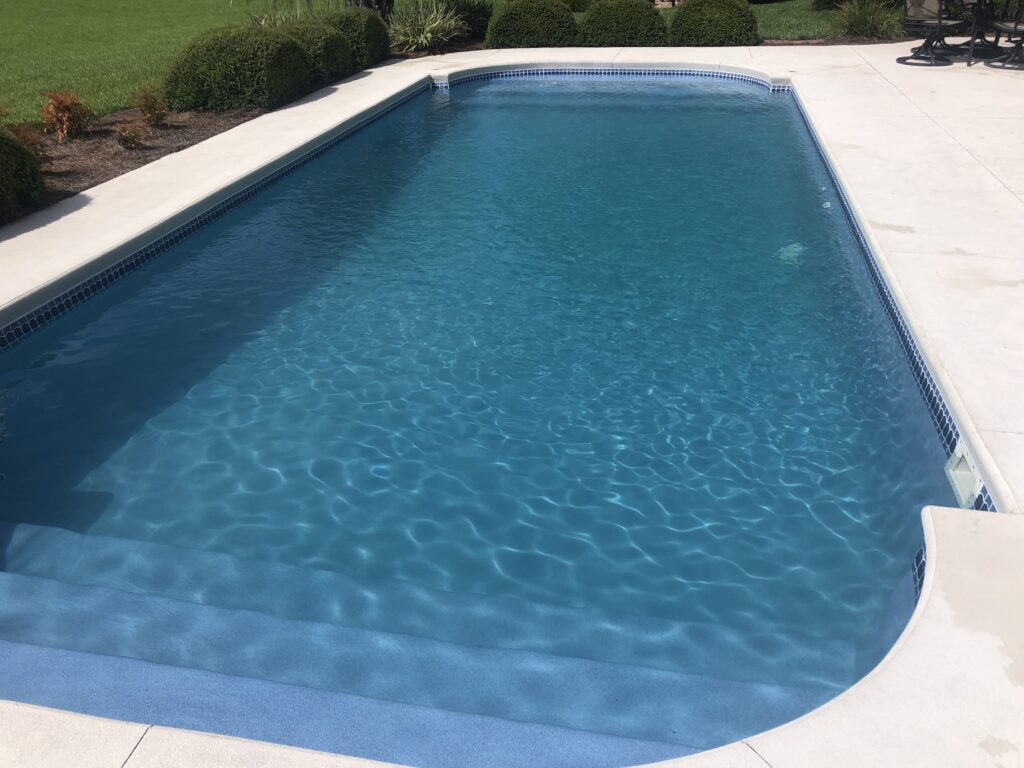How Soon Can You Swim in a Pool After Resurfacing?

Waiting to dive back into your freshly resurfaced swimming pool can feel like an eternity. Did you know the standard wait time is about 28 days? This blog post will guide you through the necessary steps for pool care, water balance for pools, and when it’s safe to swim after pool resurfacing.
Understanding the Pool Resurfacing Process
Pool resurfacing can take some time, and it’s essential to know the right timing for a resurface. The materials used make a significant difference in the quality and longevity of pool plastering.
Pool Plaster
The process of pool plastering usually takes around 7-10 days for the material to cure underwater. This is crucial because the first month after applying new plaster is when about 85% of the cement cures, significantly affecting the pool’s durability and water chemistry. The process of pool replastering can be different than pool resurfacing, in general, so the timeline will be different depending on your solution.
While it’s tempting to jump in as soon as the pool looks ready, following a strict timeline ensures better results and safety. The industry standard suggests waiting about 28 days before swimming, allowing ample time for proper curing and chemical balancing.
Experts recommend brushing the plaster daily for the first two weeks post-plastering, then moving onto careful chemical balancing for another two weeks. This makes up a total wait time of four weeks before it’s safe to dive back into your newly resurfaced pool.
Aggregate Finishes
Aggregate pebble finishes undergo a distinct curing process designed to ensure durability and aesthetic appeal. Following application, these finishes typically allow for water filling within 24-48 hours, promoting early curing underwater to enhance strength and minimize surface imperfections.
Gentle brushing in the initial days helps maintain a smooth surface, crucial for even curing. Start-up procedures focus on balancing water chemistry immediately post-fill to prevent damage and promote longevity.
While aggregate finishes offer durability against staining and chemical wear, regular maintenance and adherence to curing timelines are essential to preserve their visual appeal and structural integrity over time.
ecoFINISH Coatings: No Need for a Hot Start
Unlike traditional colored masonry coatings, ecoFINISH coatings like aquaBRIGHT do not require a hot start process. Typically, colored masonry coatings necessitate a two-week start-up process known as a “low alkalinity burn” or a “hot start.” This process involves adding muriatic acid to the pool to burn off leaching calcium from the curing masonry.
In contrast, aquaBRIGHT is a durable plastic finish that can be filled with water immediately after installation. This eliminates the need for any caustic or complicated start-up procedures. Once installed, the aquaBRIGHT finish is cured. You can fill that day, the next day or the following week; thus eliminating the need to pay for water. Pool finishes from ecoFINISH are designed to streamline the pool resurfacing process, allowing for quicker project timelines and ensuring your pool is ready for use sooner.

Factors Affecting the Curing Time
Factors affecting curing time include water balance, proper pool plaster care, and the curing process. These factors play a crucial role in determining when the pool can be safely used after resurfacing.
Water balance for pool
Proper water balance is crucial for the curing of pool plaster. It’s recommended to closely monitor and maintain the pool’s water chemistry during the initial resurfacing phase.
This includes keeping a close eye on factors such as pH levels, calcium hardness, and total alkalinity. Maintaining proper chemical balance in the pool water contributes significantly to preventing any adverse effects on the new surface material.
Regular testing and adjustment of these chemical components are essential in creating an environment conducive to successful pool plaster curing while safeguarding its durability against premature deterioration.
Conclusion
After resurfacing a pool, the typical waiting period is 28 days before swimming. Chemical balancing and regular brushing are essential during this time for proper curing. It’s crucial to follow the guidelines provided by the National Plasterers Council for optimal results.
Patience in allowing the plaster to fully cure ensures a safe and enjoyable swimming experience in your newly resurfaced pool.
FAQs
It depends on what material you resurfaced with. For example, with plaster it’s recommended to wait 28 days before swimming. This waiting period allows sufficient time for the newly applied pool plaster or finish to cure properly underwater. For an aggregate coating or an ecoFINISH coating, the wait should be much quicker.
Resurfacing alters your usual routine for maintaining proper water balance in your swimming pools. After a remodel or repair, you’ll need to retest your water chemistry and adjust accordingly with appropriate pool chemicals once safe to do so.
The best time to resurface a pool is typically during the fall or winter months. These seasons offer cooler temperatures, ideal for proper curing of pool surfaces. Additionally, scheduling during the off-season often means lower costs and less disruption to your swimming routine, ensuring your pool is ready for enjoyment when warmer weather returns.
